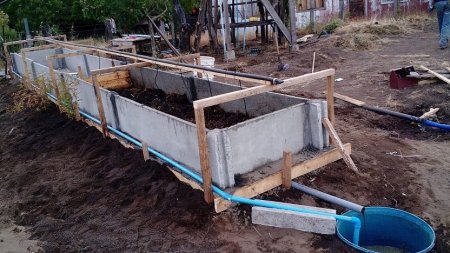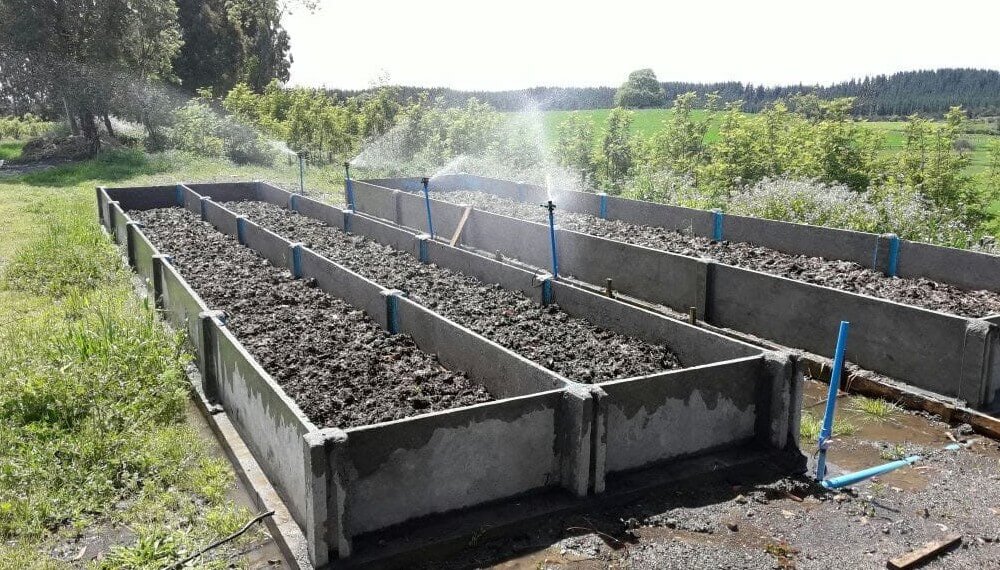A producer and Chilean specialist in vermiculture ensures that this practice could increase yields of crops at the same time that it would generate lower environmental impact.
The technique consists essentially of performing a intensive rearing of worms. Through the consumption of organic matter and subsequent digestive process, these insects release a waste that serves as organic compost and is rich in nutrients.
It is frequently associated with solid humus and humified liquids with the organic production. However, it is possible to implement this technology in crops, which would reduce the purchase of chemical products, with the consequent reduction in costs and contribution to the environment by using a safe product.
In this sense, by making a solid construction, you can recover the humified liquids and produce solid humus.
This new construction technology mainly allows recover humified fluids that arise from it as by-products and are recovered the day after watering the worms and they are used as liquid or foliar fertilizer.
Mainly, the objective to implement an intensive vermiculture with automated irrigation is lower costs for both organic and chemical fertilizers for any type of crop (vegetables, olive trees, pomáceas, avocados, cherry trees, berries, European hazelnut, grapes, meadows, eucalyptus nursery, pines, etc.).

In this line, it seeks to improve the production and quality of the crop, with greater plant growth. Thanks to the fitohormonas produced by worms such as gibberellic acid, they will double in number, since the worms produce the phytohormone. As a proven example, the blueberry growth in normal form was three years to produce the fruits, while with humified liquids it took two years; Another registered case was in the production of cerezos: to make analysis of nutrients in the leaves, these were found with stable nutrients and caused an increase of double the size of the leaves, and optimized both the quality of the fruit and the resistance to diseases in the tree.
“I installed more than 500 vermicultures to small peasant families in beds of 2, 4, 6 and 10 m2, of concrete with an automated irrigation system for worms, the objective is that with a centrifugal pump the worms are watered automatically, the humified liquids are extracted and the greenhouse is watered with an artisan ventury that I install ”, explained the specialist Roberto Verdejo Vega.
the labors and more benefits
Another advantage of this practice is the almost no daily work. With only two man hours per week for the management of 20 m2 of worms, there are many benefits of worm castings for the vegetable garden or garden.
As for the work, it begins with the construction and only irrigation is carried out, that if possible it should automate. Once a week the guano should be moved and once a month it should be turned. Finally, the humus must be harvested every three months in spring-summer or every six months in autumn-winter. The worm guano should be thrown only once in this quarter or semester, depending on the season. Depending on the number of meters of intensive vermiculture produced, 40 liters per day of humidified liquids will be generated per meter of bed. To save guano it can be mixed with straw or other material.
“As you can see, I have done this work for quite some time and have installed it in many communes in Chile, improving the quality of life of peasant family agriculture, but it would be ideal for all farmers to have intensive vermiculture, but always with the aim of recovering the humified liquids, since these liquids are extracted daily and are very beneficial for all types of crops, the humus is only harvested from time to time but the humified liquids are harvested every day, many professionals do not They know and do not recognize the economic benefit, improvement of soil and quality of life when implementing this system, all farmers can occupy the intrapredial guanos or organic waste. For entrepreneurs from 20 to 200 hectares I have installed intensive vermiculture 20 meters long by 1 wide, 800 liters of liquids are recovered daily, these liquids are incorporated into the irrigation system ”, explained the specialist from Chile.
–


